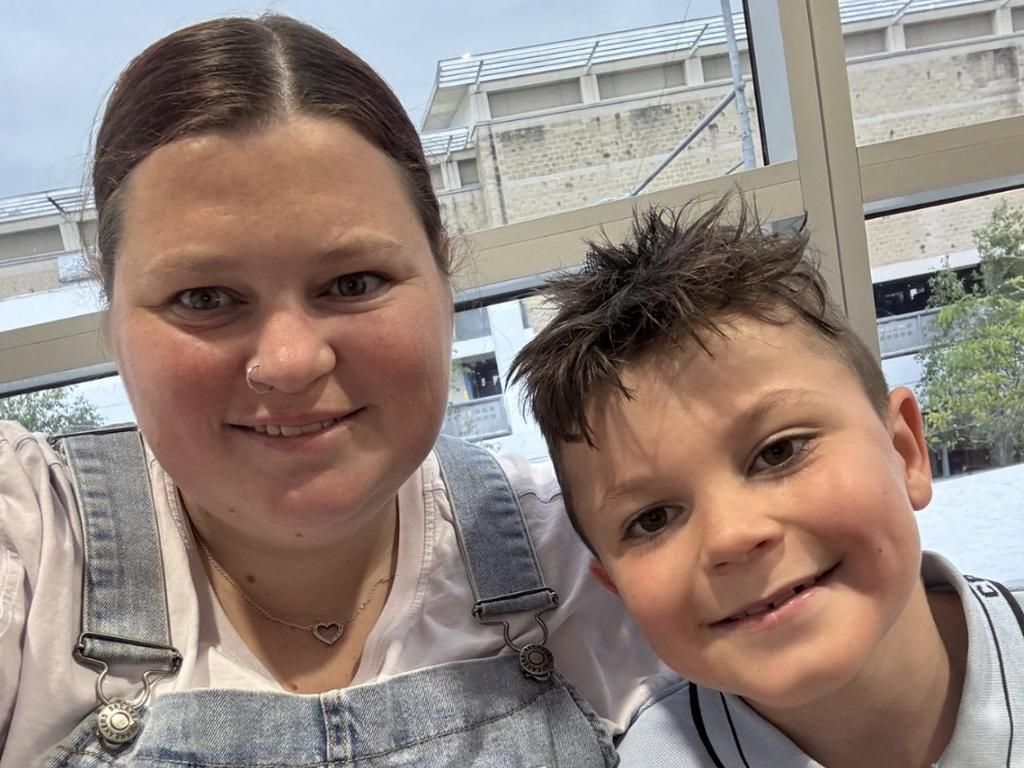Kismet app data reveals average wait time for NDIS services in Australia
One mother was told her son needed to wait 18 months for speech therapy as massive NDIS delays continue to anger Aussies. See the average wait time in your state, and the neglected suburbs.
Health
Don't miss out on the headlines from Health. Followed categories will be added to My News.
Exclusive: Access to NDIS services is a lottery with some waiting months for help, while others in more desirable postcodes are getting appointments far quicker.
Exclusive data from the app Kismet, which has 100,000 users, including 20,000 on the NDIS, shows people in some suburbs are waiting on average 273 days for speech therapy.
In general those living in Victoria, Queensland, South Australia and Tasmania find it hardest to get an appointment with a speech therapist. In NSW, osteopaths are difficult to come by. While people in the NT wait the longest for occupational therapy.
Kismet CEO Mark Woodland said they were seeing huge demand in areas where there were no services, and there were vast differences even when comparing postcodes “next door to each other”.

In Victoria, the app data shows that people in Burwood and Carrum Downs in Melbourne, and further out in Bendigo, waited on average 273 days for speech therapy, the longest anywhere in the country. Geelong residents waited on average 190 days to see a psychologist. While those in Coolaroo waited the longest in the country for support work. Mornington was also a black spot with requests via the app for occupational and speech therapy typically unfulfilled.
Meanwhile, in NSW, the app data shows people in Cabramatta, Western Sydney, waited 181 days for counselling and social work, while in Killara on the Upper North Shore, they waited on average 181 days for support co-ordination. Casino in the Northern Rivers area was a black spot with requests via the app for cleaning, gardening and home maintenance, typically unfulfilled. People in Picton in the Macarthur region were generally unable to find speech therapy.
For Queensland, the app data shows those in Daisy Hill, Logan, waited on average 187 days for speech therapy, and nearby Benowa, people waited on average 183 days for behavioural support. Camp Hill had the longest average wait for all services in the state and the fourth worst in the country, at 181 days. While requests via the app for cleaning in Loganholme and speech therapy in Brendale and Helensvale were typically unfulfilled.
The app data shows South Australia had some of the lowest wait times in the country, with people waiting on average 22.2 days for occupational therapy, compared with the NT where it was 120 days, 55 days in Tasmania and 40.5 days in Victoria. The average wait time for speech therapy in the state was 28.3 days, again lower than Tasmania where it was 131.7 days and Victoria where it was 89.6 days.
Mr Woodland said those who provided the services probably lived in affluent areas.
“You just have this vicious cycle that occurs,” Mr Woodland said. “So you need people to go into these other areas, open up services, but people usually stay close to home.”
He said he was working on sharing his data, so businesses can see that it is worth their while providing services in some of these high demand areas.

Therapist Rachel Brimblecombe owns business Better Rehab, which employs 500 people nationally. She said she was trying her best to plug the gaps, but was hamstrung by a workforce shortage.
She is currently advertising 100 jobs, mostly for occupational therapists, but also physios and speech therapists.
She said most of those are for regional and rural areas, as well as poorer city suburbs.
“People that are needing the services the most are not getting the services,” Ms Brimblecombe said. “I really feel like the people that are suffering are those in the lower socio economic areas.”
However, she said there were also affluent black spots, like Mornington in Victoria.
She said one of the biggest challenges was how many people were exiting the industry, especially after the disability agency froze NDIS fees for therapists for the fifth year in a row.
“We hear about burnout a lot,” Ms Brimblecombe said. “And then the other thing is the NDIS price freeze, because it’s kind of got everyone really anxious. We’re starting to get margin pressures.”

Emily Foster’s little boy Blake Kelly, 8, from Kingswood, NSW, was originally told he would have to wait 18 months for speech therapy. In the end Better Rehab saw him within four months.
She said she was grateful because before therapy, he had difficulty communicating with his peers.
“He was in his shell,” Ms Foster said. “But now he’s like a whole different boy with his confidence shining through.”
Ms Brimblecombe said it was vital that people like Blake get access to therapies quickly because it can be life-changing.
A spokesperson for the National Disability Insurance Agency (NDIA) said its priority was “ensuring participants and their families receive the disability-related supports they need, no matter where they live”.
The disability agency said it was working “with local communities on a range of market interventions to improve participant access to the NDIS” and that latest figures show the number of providers continue to grow.
The NDIA said it was strengthening its supports to participants in remote and very remote Australia through a combination of locally based services and dedicated remote servicing teams that support both individuals with disability, and communities.
“We fund Remote Community Connectors to service 480 remote communities in the Northern Territory, Western Australia, South Australia, and Queensland,” a spokesperson said.
The agency has close to 200 dedicated staff who undertake regular travel to all those communities to meet with participants and support them with everything from community connections to scheme access, to planning and reviews.
More Coverage
Originally published as Kismet app data reveals average wait time for NDIS services in Australia









